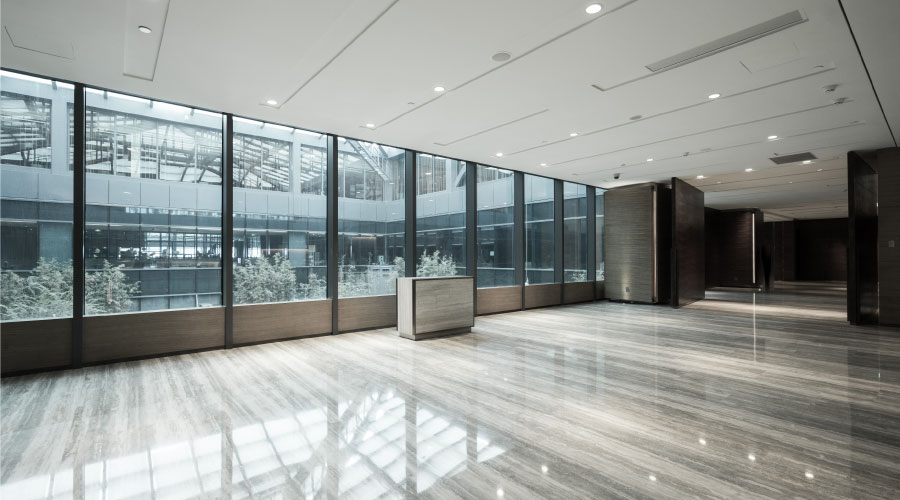Gauge, Twist, Resiliency Are All Key Carpet Terms
When you're evaluating carpet for possible use in your facility, three key terms to understand are gauge, twist, and resiliency.
Gauge is how far apart the yarns are in the carpet across the width, such as 1⁄8 gauge, which is an eighth of an inch or 1⁄10 gauge which is a tenth of an inch. More technically, gauge is the number of needles per inch across the width of a carpet tufting machine. Stitch rate is the number of stitches per inch in the length of a carpet. The gauge of a machine does not change but the stitch rate can. So a 1⁄10 gauge carpet with 10 stitches per inch means there are 100 stitches in one square inch of the carpet. The higher this number, the denser the carpet.
Twist is the number of twists in the yarn per inch. You can have a carpet with virtually no twist or one with 5 twists. The more twists, the more resilient the carpet will likely be — particularly in cut pile construction — which should improve performance.
Resiliency is the spring or bounce back the carpet has. You want density and resiliency, which will equate to great performance and appearance retention. Appearance retention means the carpet won't ugly out; in other words, it won't look worn out. Carpet does not wear out, it uglies out — possibly because the terms we're covering weren't given proper consideration when the carpet was being selected.
As this list of terms suggests, carpet is actually the most complex of flooring materials. It has the greatest variety of constructions and styles and can be made to perform at any level, from a builder's-grade or base-grade, limited-life product to an extraordinarily high performance material that can withstand the heaviest traffic loads.
In the end, density in carpet is the key to performance. It's not the number you see on the specs, it's actually how dense the product is. Make a claw with your hand like you were going to scratch and wiggle it into the face of the carpet. The more difficult it is to get to the bottom, the denser the carpet and the better it will perform.
Resilient Floorcoverings
In the hard surface category, resilient floorcovering, tile, and wood are the most common materials used in commercial applications. The selection of the appropriate floorcovering material can ensure high performance and longevity.
Resilient flooring can be vinyl, vinyl composition, linoleum, rubber, or cork. Resilient means that the material has give or some semblance of "bounce back," to put it very simply.
Cushioned vinyl has a foam layer that adds resiliency or incorporates a cushion.
Sheet goods are hard-surface floorcovering material that come in wide widths, such as sheet vinyl in six-foot widths. Tile is flooring material that comes in individual pieces, such as squares or planks.
Luxury vinyl tile, or LVT, is vinyl tile with a printed surface visual to make it look like stone, metal, wood — almost anything. It can come as sheet goods or in planks.
Wear layer is the surface layer of vinyl flooring, measured in mils, that delivers the performance to resist abrasion, scratches, and stains.
Embossed means that texture is aligned with the pattern in a vinyl floorcovering. For example, in vinyl sheet goods, the surface may look like a ceramic tile, with grout lines that are lower than the rest of the surface.
Out of register means that the pattern is not aligned on the material.
Homogeneous means all components in the floorcovering are uniformly distributed throughout the material. Heterogeneous, by contrast, means the components are not uniformly distributed. A terrazzo floor is a heterogeneous mixture.
Heat welding is the process used to seal the seams of sheet resilient flooring materials. After the seam is prepared, heat guns melt "welding rods" that match or complement the color of the flooring material.
Related Topics:














